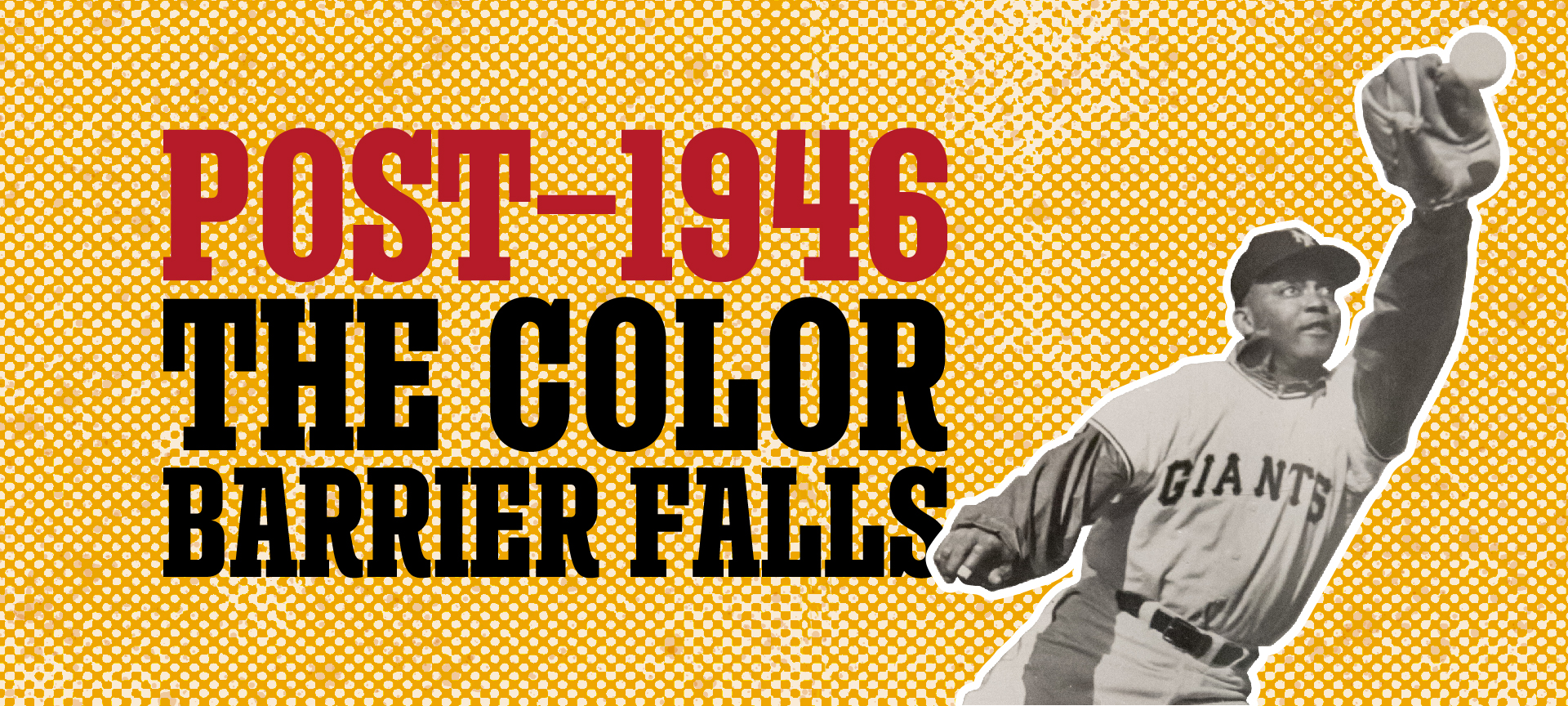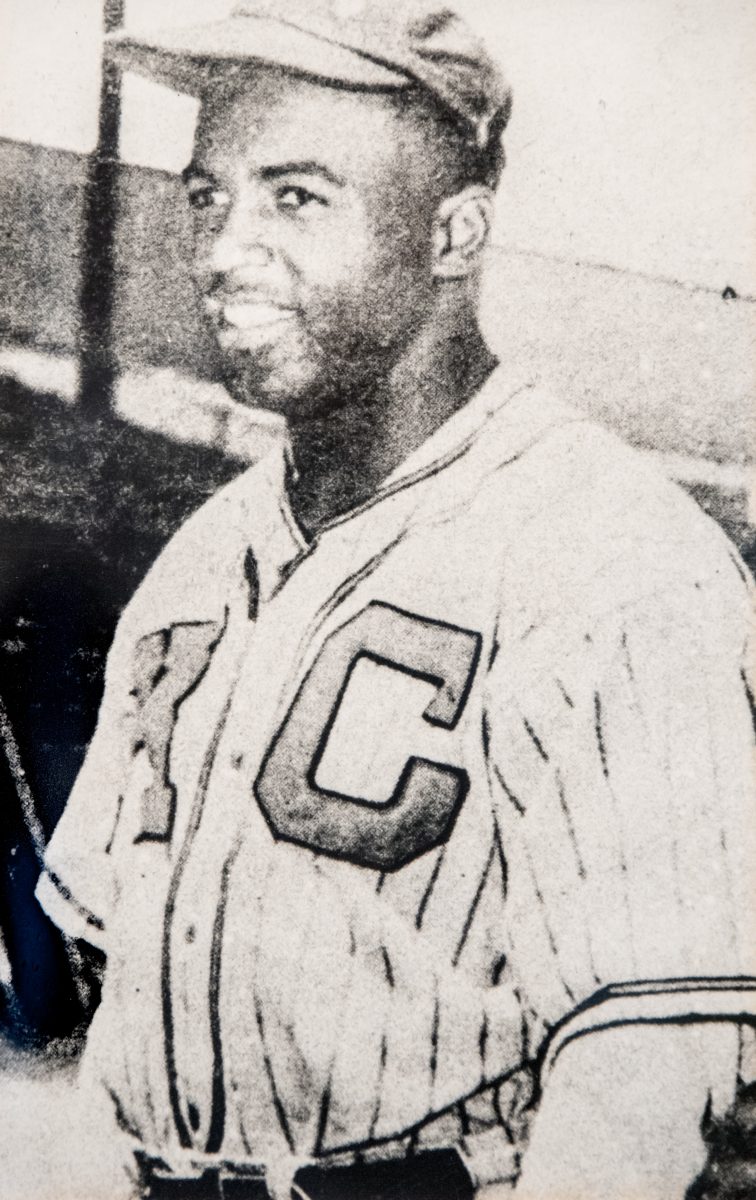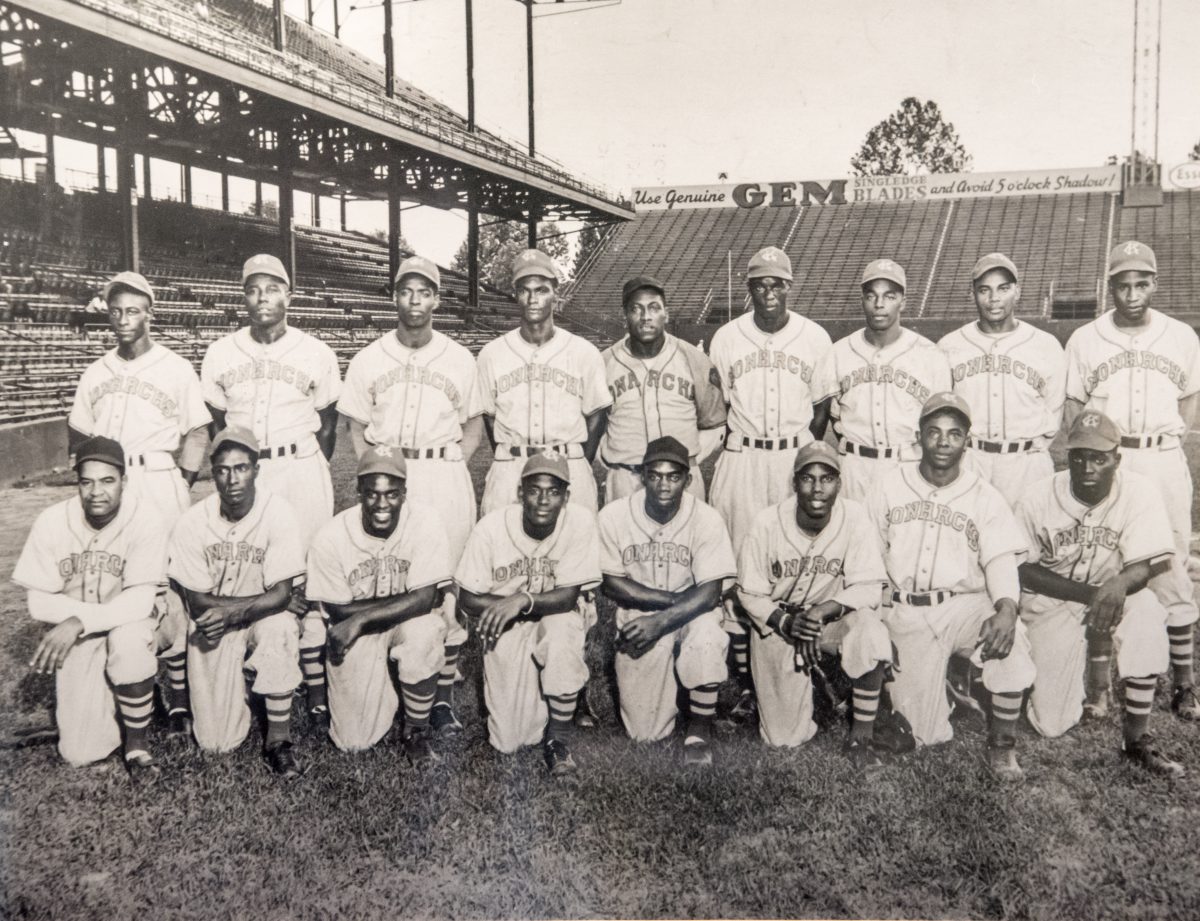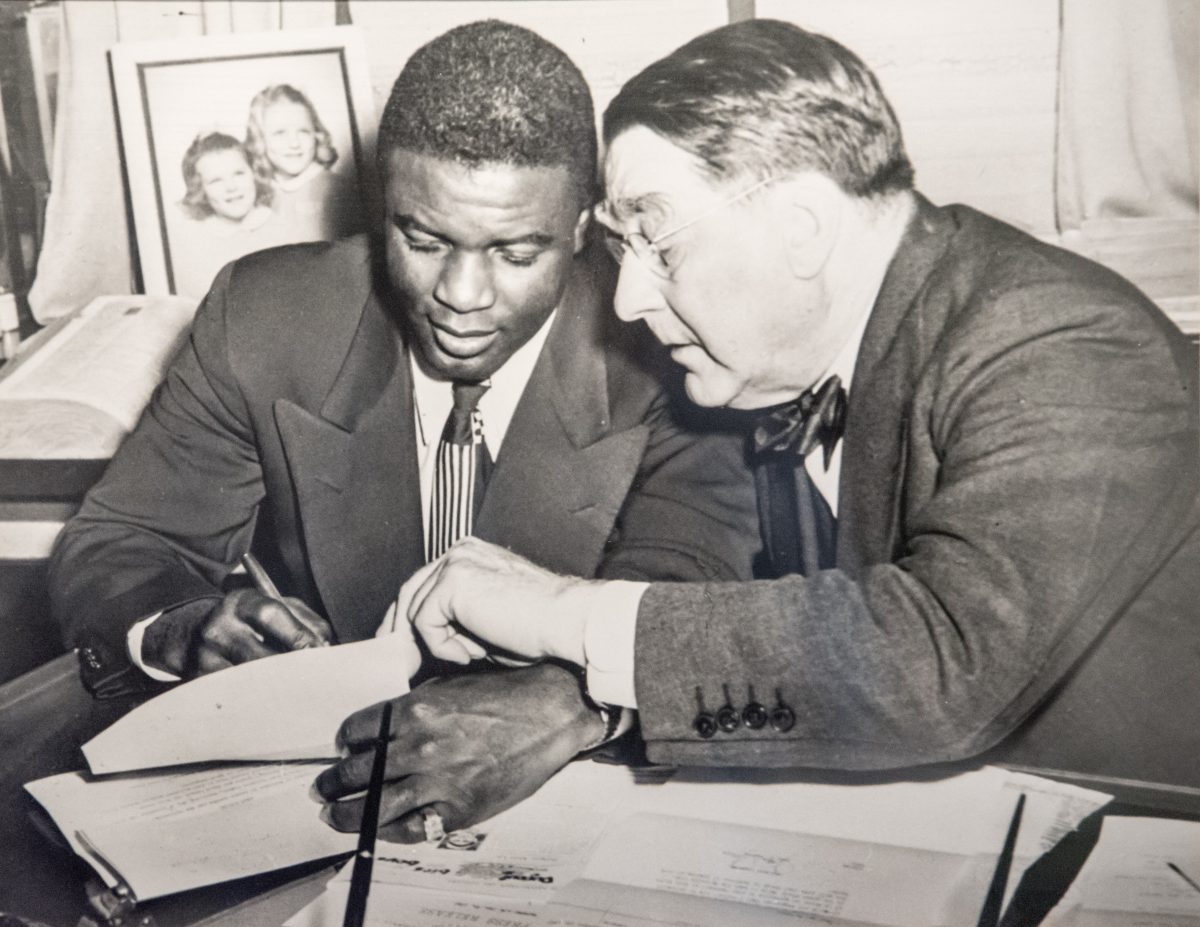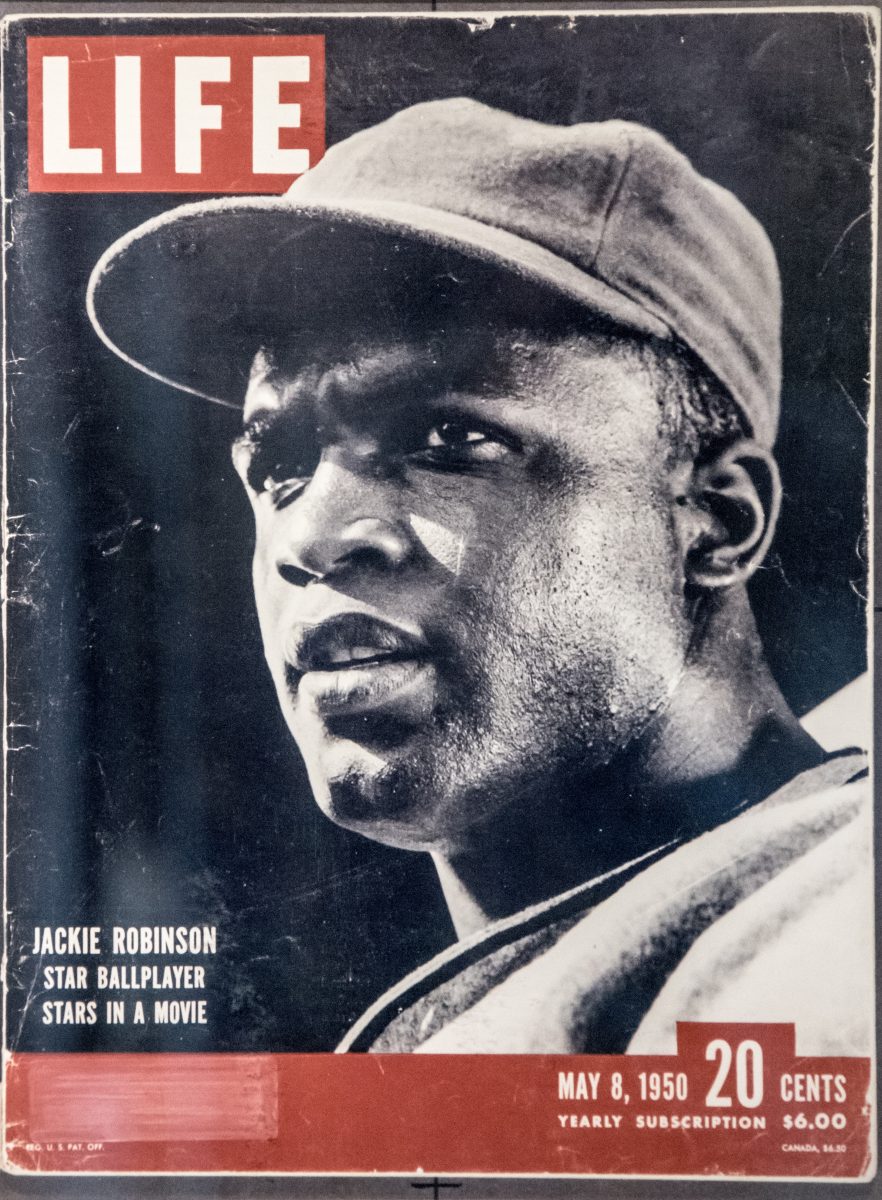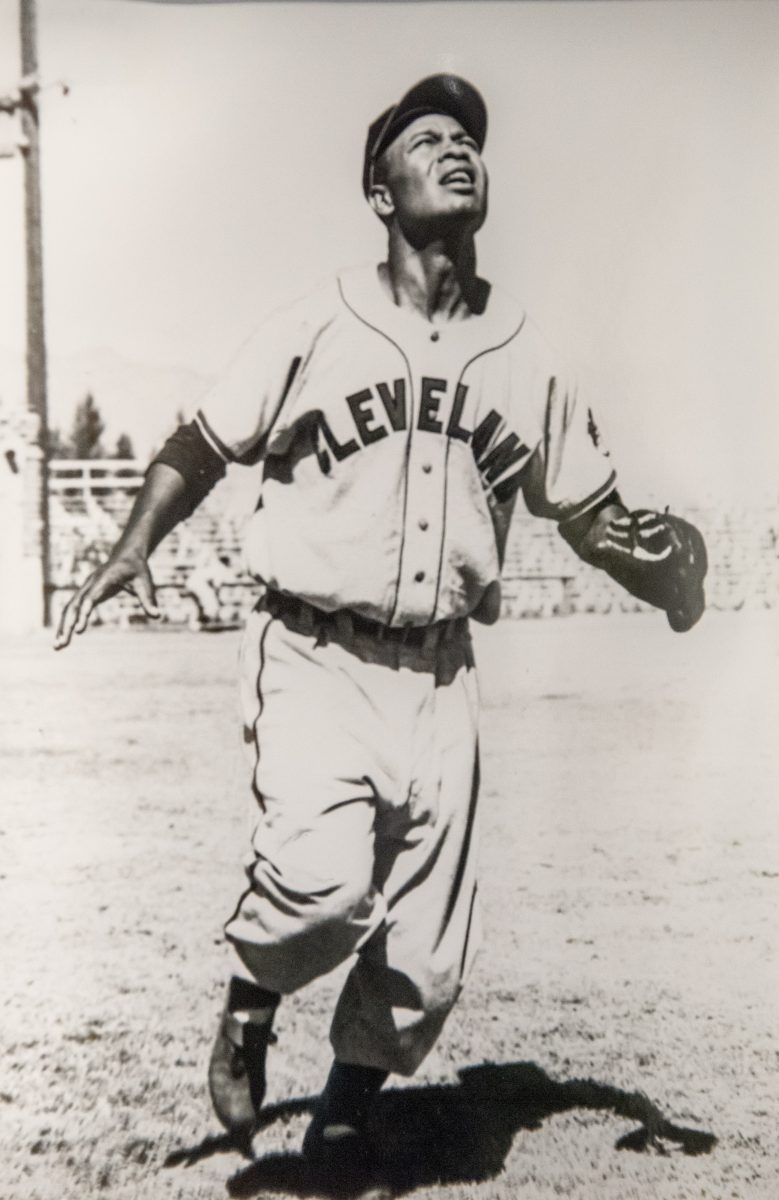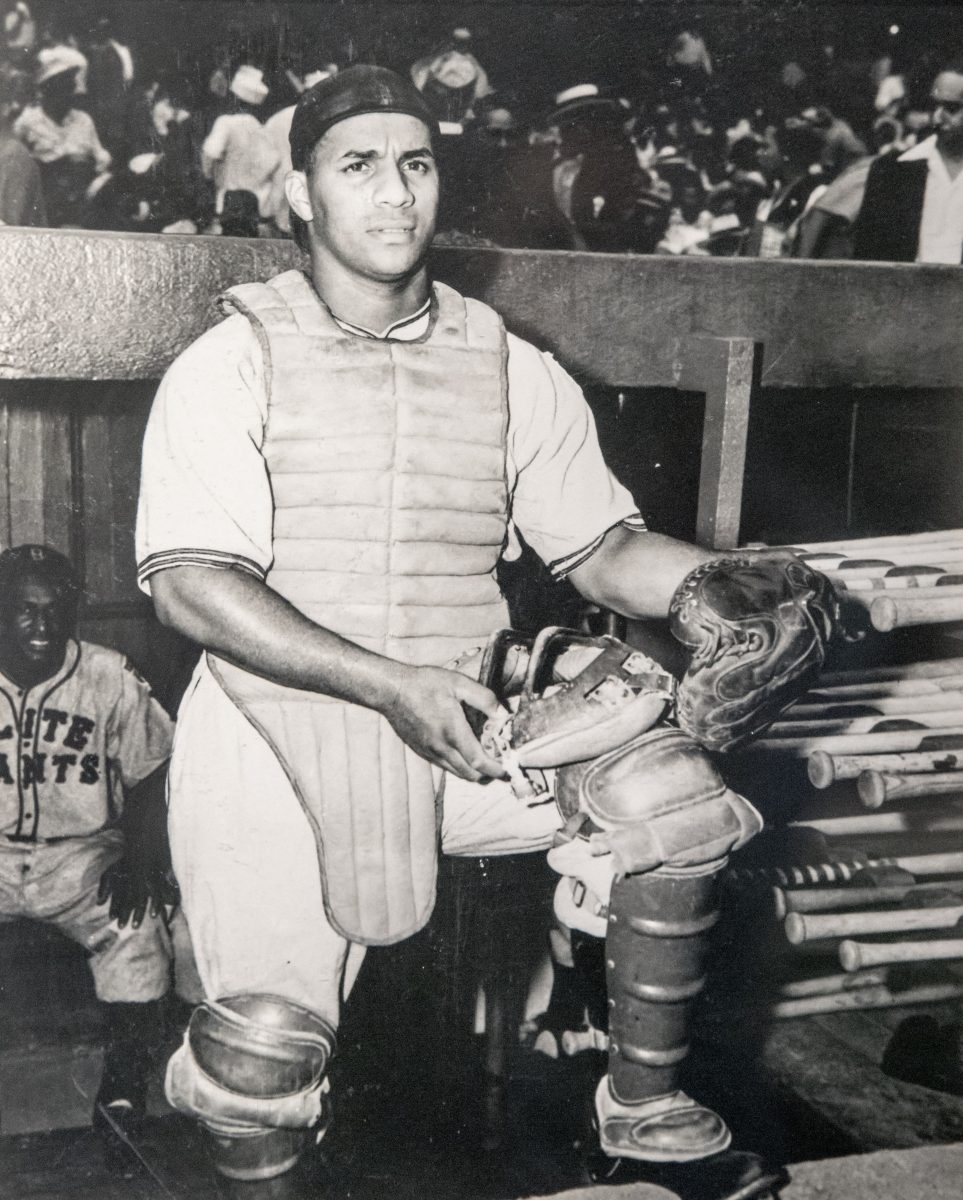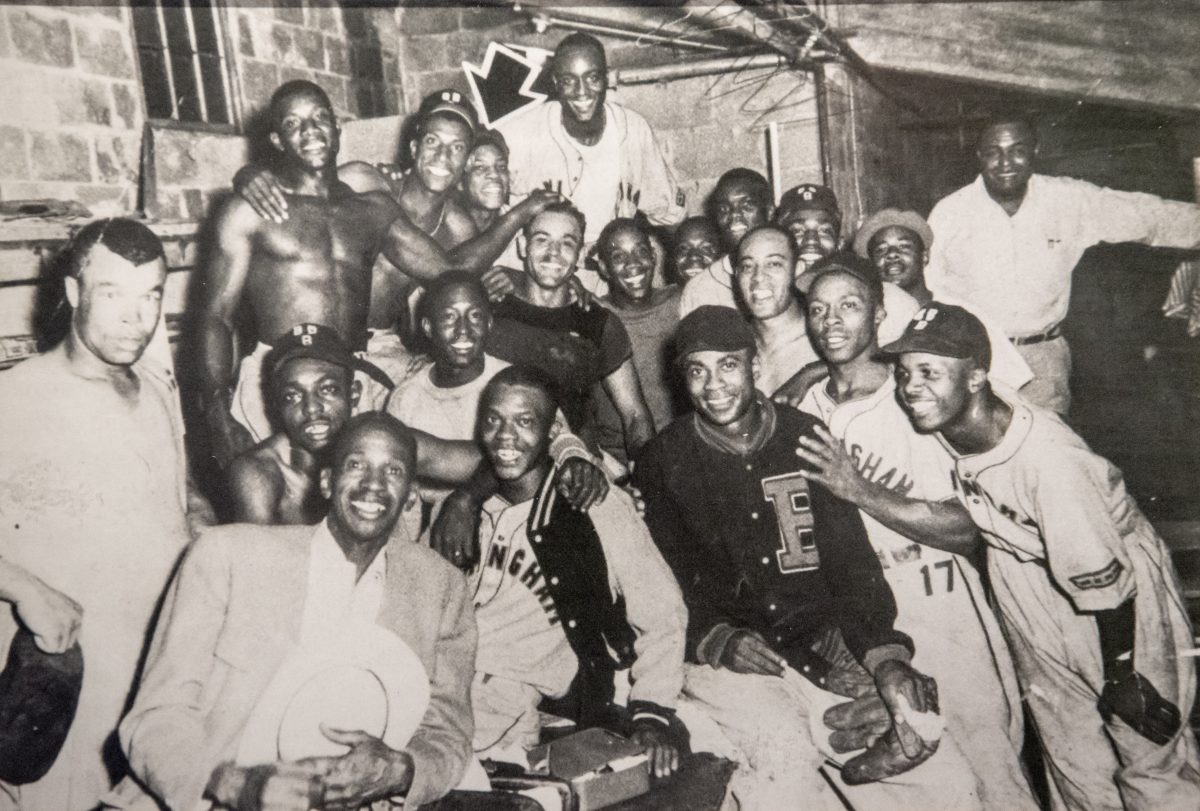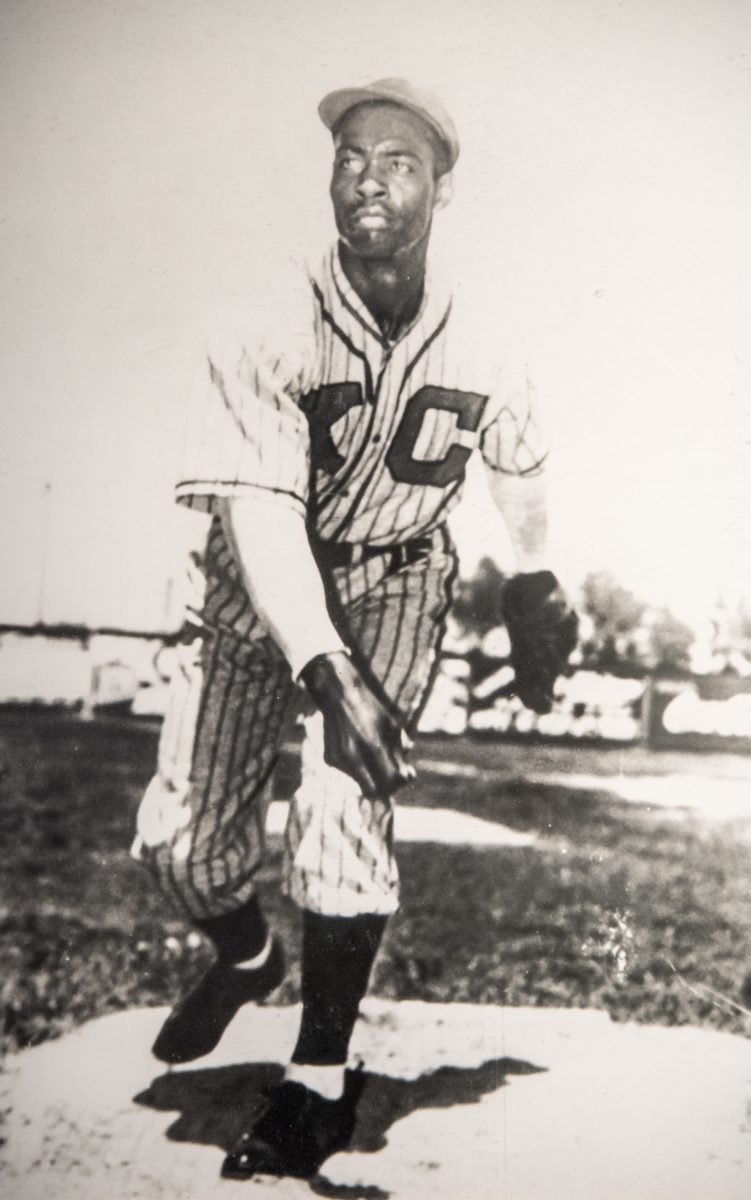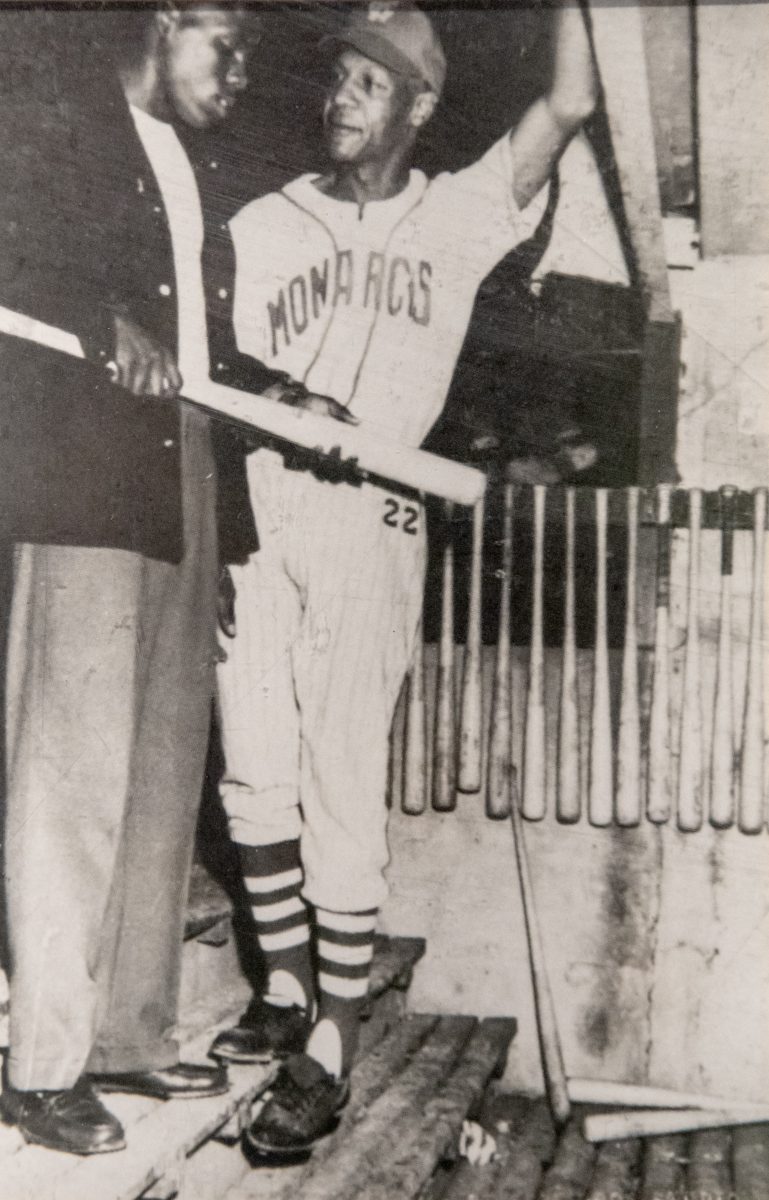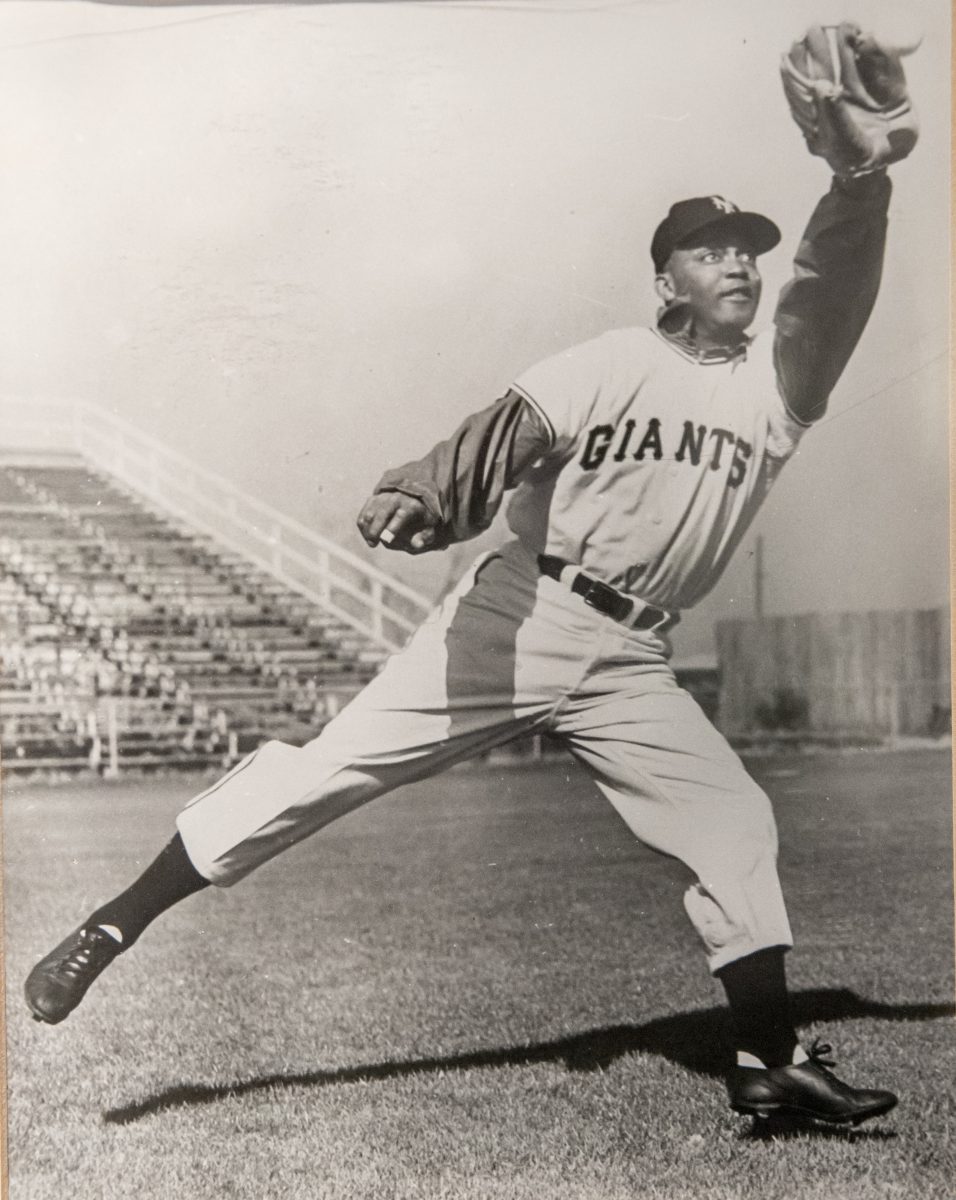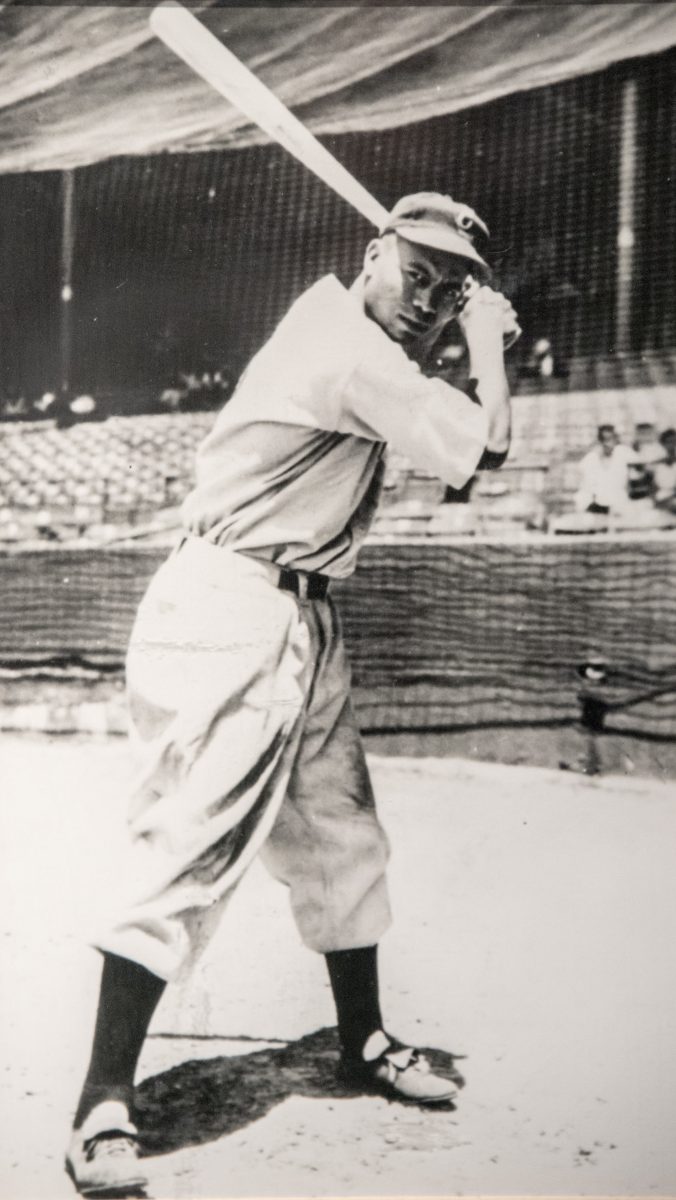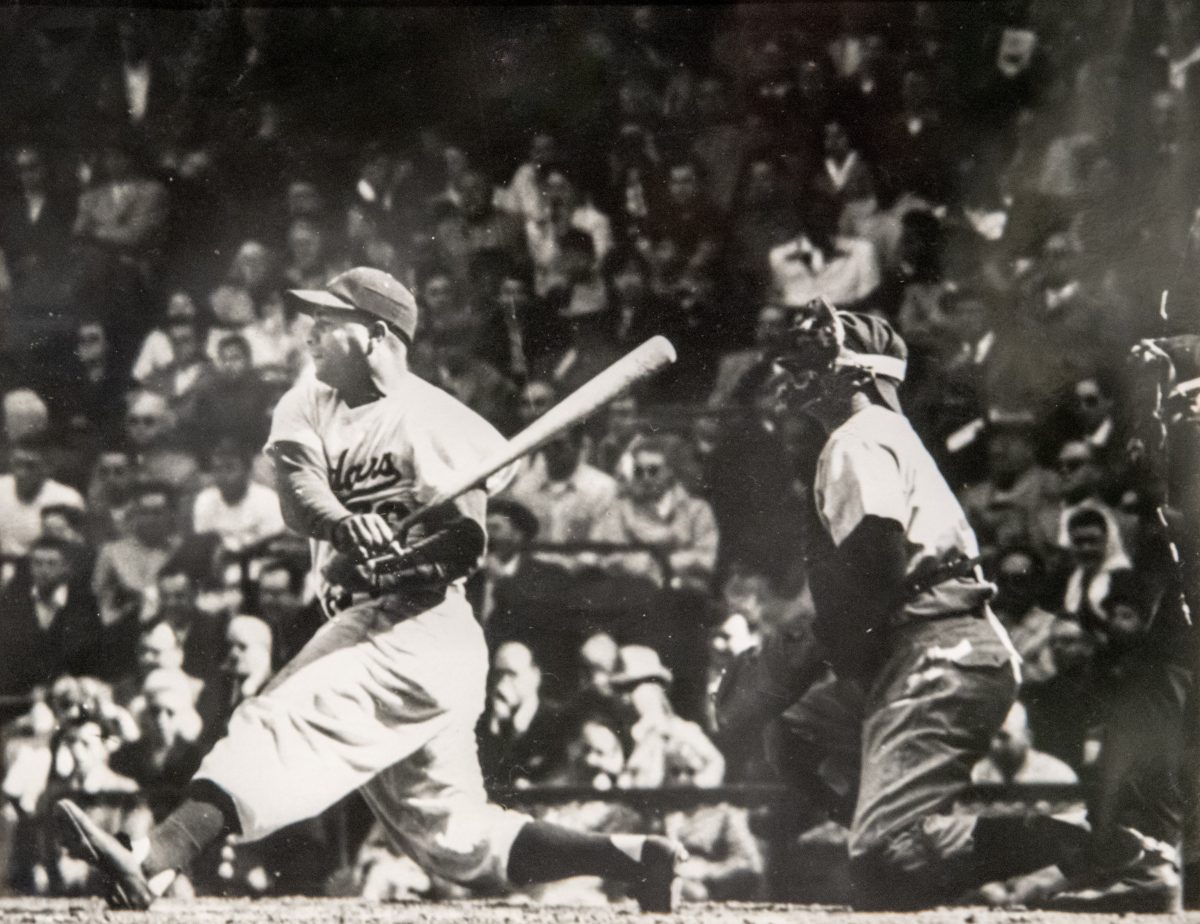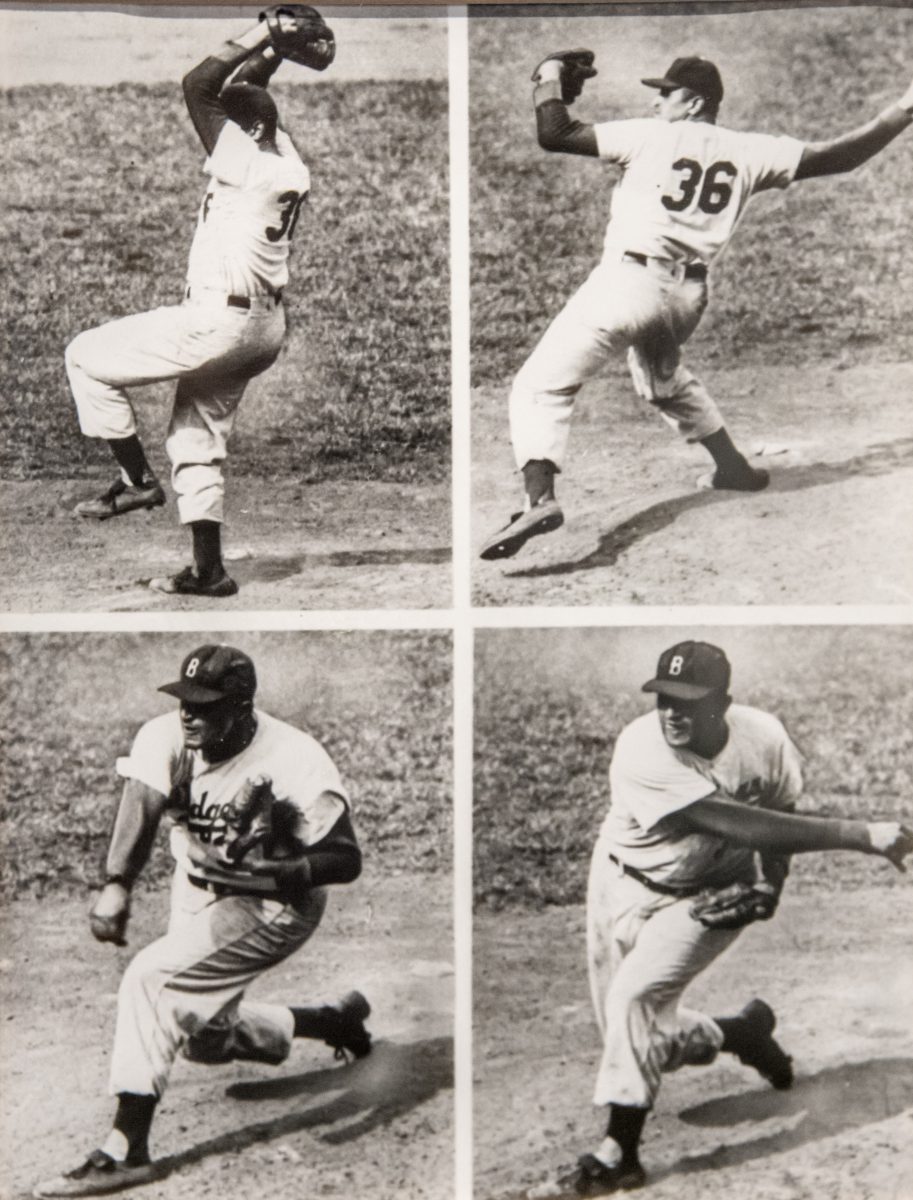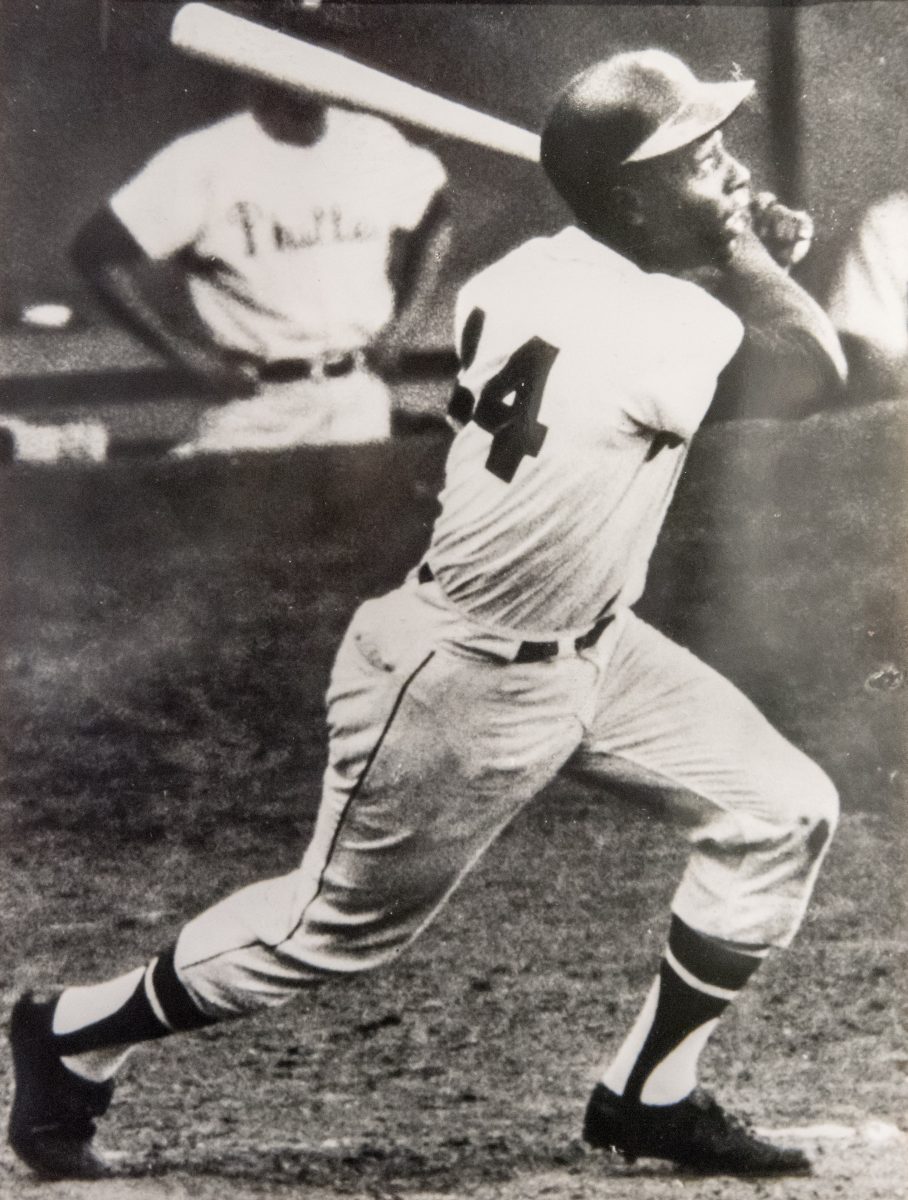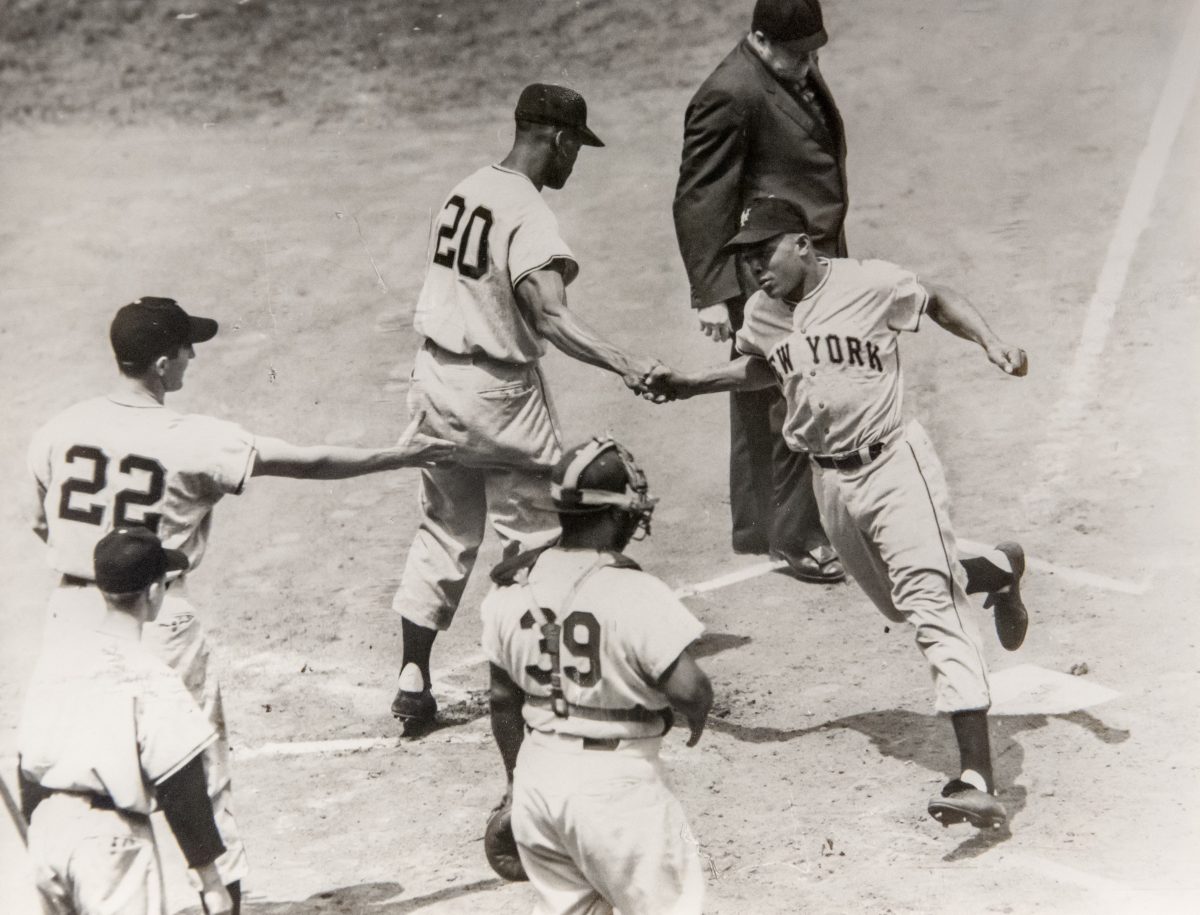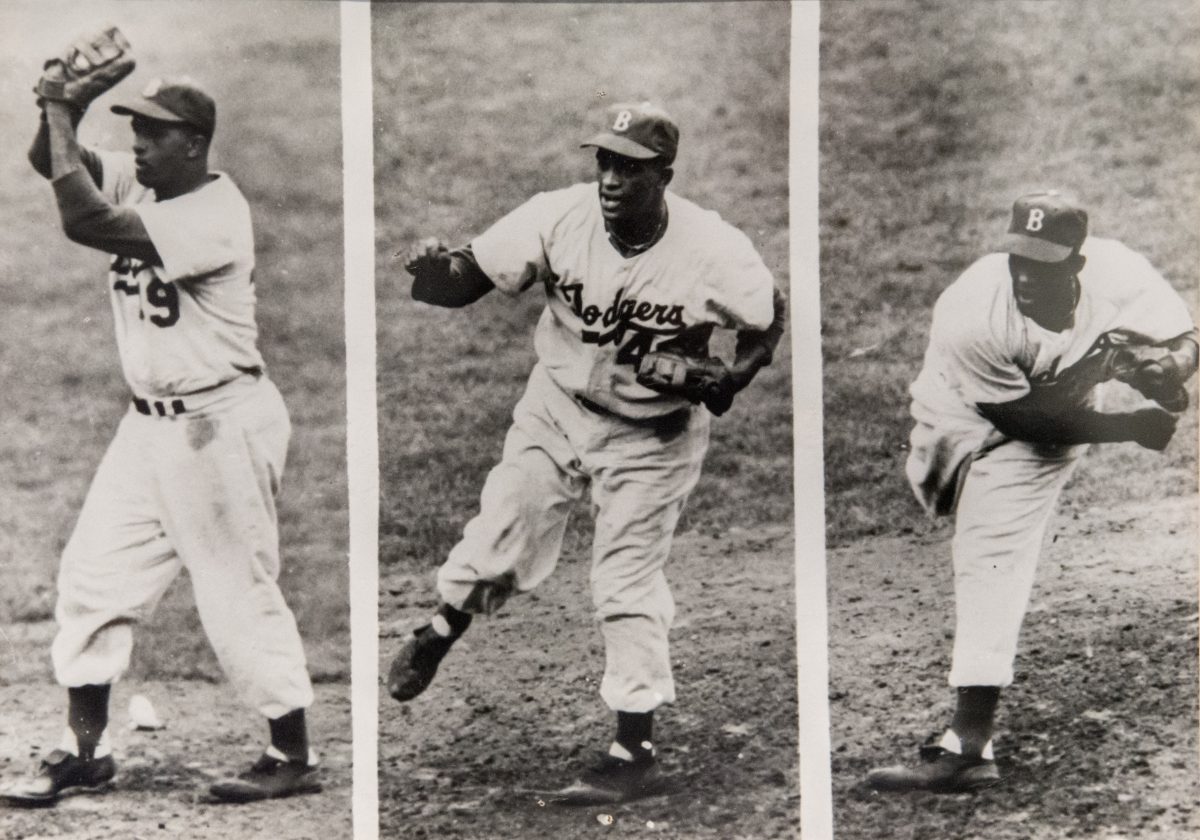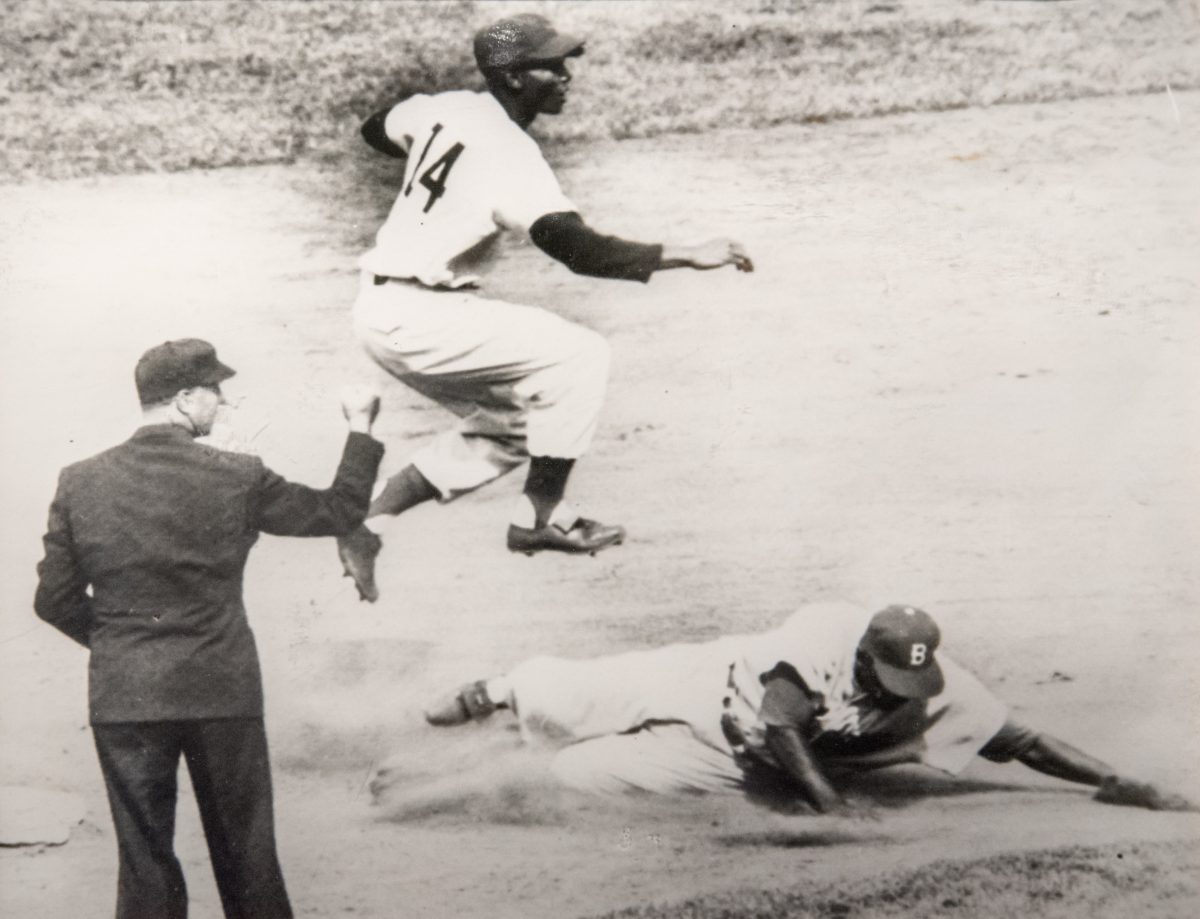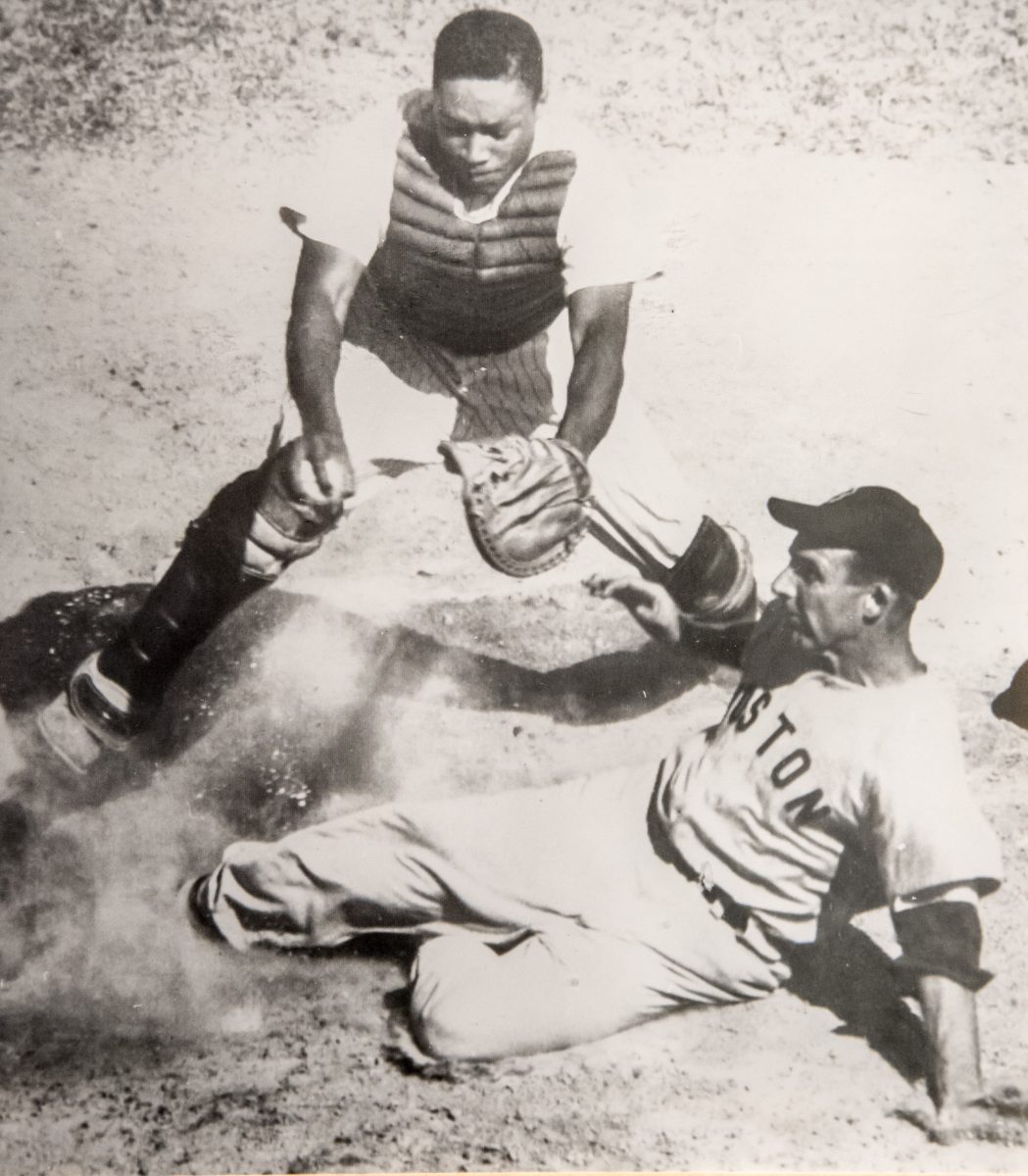Discover Greatness: Part 5
1947 — Jackie Robinson makes his Major League debut with the Brooklyn Dodgers in April. Larry Doby joins Cleveland Indians in July as the first African American in American League.
1948 — Negro National League disbands after nearly all teams in league report financial losses. Satchel Paige leaves Negro Leagues for the Majors.
1954 — Supreme Court renders decision in Brown v. Board of Education of Topeka, Kansas. Court states that separate public facilities established under “separate but equal” doctrine are no longer legal.
1959 — Integration of Major League baseball is complete when Elijah “Pumpsie” Green joins Boston Red Sox, the last team to sign a Black player.
1960 — Negro American League disbands at the end of the season, with only four teams left for barnstorming duty.


Continue exploring the exhibit

